On May 29th, 1940 the US Senate held a hearing about Senate bill 3983, a measure to adopt the Johnson semiauto rifle as a standard US military arm. Opening the testimony was Melvin Johnson himself, and he was followed by a retinue or industrial experts and military officers attesting to the virtues of the Johnson rifle. I got my hands on a copy of the complete transcript of the hearing, some 183 pages. It’s a long read, but well worth the time is you are interested in the controversy over the Johnson and Garand that was brewing at the time.
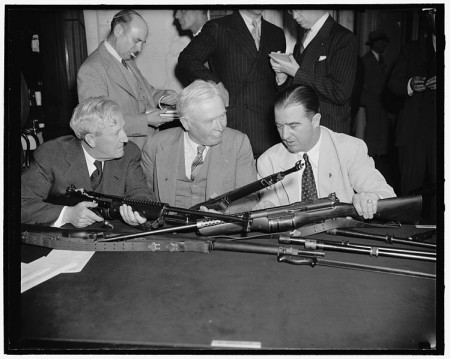
In addition, it is quite enlightening to see the different levels of firearms knowledge and attitudes in the various participants. Several of the Senators on the hearing committee showed ignorance nearly as complete as any California Democrat today:

In another instance, a veteran of the Spanish-American War recounts how he was issued a mere 30 rounds per man with which to train his company – and how only the best shots were allowed to use more than 10 rounds of it. Small details like this, and seeing the attitudes toward things like bayonet usage and gas vs recoil operation really give you a deeper and more complete understanding of the debate, better than any summary could. You can download the transcript in PDF format here:
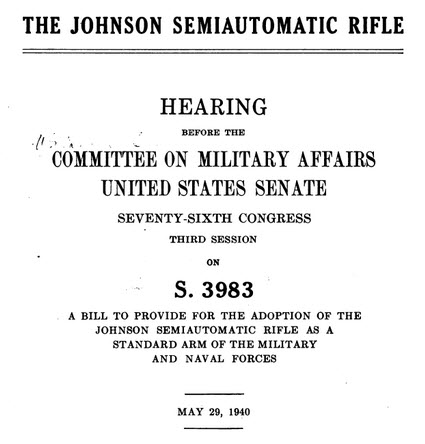

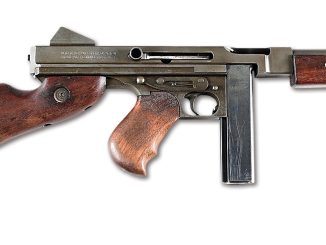
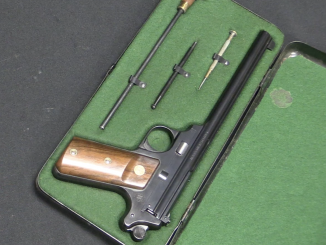
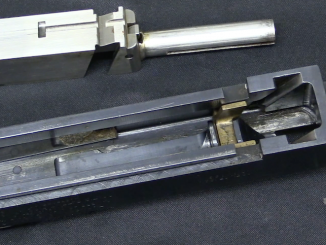
this is the kind of reading i want to start my morning with, but i cant fin the link (the image is unactive) the page you showed up there is hilaryous “how far does it kick back” well at least he knows weapons have recoil, some politician nowadays think guns are laserlike death machines.
recently i overheard a college activist here in colombia exposing a confused crowd the terrific atributes of a galil rifle:
“200 shot magazine, 800 shots per second and the ability to accurately kill an small child at 4000 meters, explosive bullets that can be combined with burning bullets and dum dum bullets that spin in the air to make a circular wound on its victim, this means a single solider can kill 200 protestors in less than a second, and the price for this death machine? only 43000000 pesos (real price 750000 pesos or 375 dollars) and 12000 per bullet (pricer per 5,56 round 600-700 pesos)so this thing wastes in a second enougth money to feed 30 children for a month”
every one was facinated and asked why the goverment would equip its solider with such a war machine if it wasnt for killing massive concentrations of protestors, when more civilizated countries like venezuela or argentina had rifles designed to figth armies whose bullets didnt spin to cause circular wounds.
cute isn it?
keep the amazing material coming man and thanks for your work
hey, we dutch waited with the introduction of a better helmet (the kevlar type), because it looked to much like the german ww2 helmet and that could offend the old. a kicking rifle would be way to much for those to decide on.
As a proud caretaker of a couple of M1941s (I nearly said a couple of Johnsons which might give the wrong idea) I will enjoy this hearing transcript.
My own take is that it is an excellent weapon with some pros and cons vis-a-vis the M1. Since the M1 had a five year lead (during which some real teething troubles were debugged) the Johnson would have had to be hugely superior to the Garand, and it just isn’t. The LMG version deserved better distribution, though.
Just for the record, I keep the twins on the same side of the gun room, but counterweight them with FNs on the other side so that New Hampshire doesn’t capsize, like one Congressman feared would happen to Guam.
You cracked me up three times there…you trying for a record?
Thank you very much for making this document available.
P.S. I had not trouble downloading. Size is 14.7 MB (183 pages)
My interest in Johnson rifle started many years ago from point of curiosity (for not being gas operated, as is common) and this interest grew to point I was actually able to examine it (not to shoot it yet) and even later with advent of internet to see and examine diagrams and other literature.
I have come to conclusion that this was really an ingenious and seminal design, full value competitor to Garand. Actually, with not fully materialised LMG version (while M60 was introduced instead) it represented a homegrown all-American small arm complex which has no rival to this day. This will likely feed enthusiast curiosity for times to come.
Just to add to previous a bit funny thought: what would happen if this design was to be revisited in modern approach (maybe even in bullpup form) together with LMG version and belt-feed (there are patents to be used). It might have lot to go for it.
There is an article in the latest Garand Collectors Association journal that touched on the Johnson. The article was about a Garand and a Johnson that a sailor brought back from one of the island hopping campaigns. The article wasn’t concerned about which was better, etc., but was more interested in the details of the two guns that were preserved in as-issued condition.
It did have two interesting points though: it was reported that some Marines liked the Johnson so much that they offered to buy them with their own money, and that a large number of Johnson’s were captured by the Japanese from the Dutch forces. That last part is of interest in that if the Johnson was designed for manufacturability, why didn’t the Japanese manufacture it?
If not for timing, the US would have gone to war with the Johnson rifle (if it had been introduced a few years earlier while the Garand was having issues) and the Remington 53 pistol (if the Navy had gone with it prior to WWI). With no M1 there would have been no M14, and would that have ensured the adoption of the FAL or a detachable mag 7.62 version of the Johnson? If it is true that the 53 had less felt recoil than the 1911, would the US have stuck with .45 caliber? One of history’s great what-if’s.
If there is anything of manufacturability issue on M41, it is likely its fabricated receiver. Because of recoil operation it requires front barrel support surface, therefore extension. This in turn is welded on to the mentioned receiver using arc welding which means lots of heat input and resultant need for straightening, weld polishing and such. If it was today’s ways, it would be likely laser welded with virtually no distortion.
“That last part is of interest in that if the Johnson was designed for manufacturability, why didn’t the Japanese manufacture it?”
1.It don’t use their ammunition.
2.They don’t have technical drawing needed to production. It probably can be reverse-engineered but it don’t guarantee success.
The Japanese did experiment with a copy of the Garand, i.e., the type 4, of which Ian has a good article on this web site.
So the Japanese were interested in semi-auto rifles and were not above copying US arms. The Garand is a marvelous rifle, but heaven help anyone who wants to tool up for it. A concern in pre-war America was that civilian gun companies could not tool up quickly to produce it. The Johnson was supposed to be easier to make (although someone here did point out that it required a welding operation, that may have been an issue.) So, it is interesting that the Japanese tried to copy the Garand and not the Johnson, 2 and 1/2 years after they had a sample of Johnsons. The Japanese might have liked bayonets, or maybe they viewed the Johnson as being suspect because the US had not adopted it.
The Japanese certainly liked bayonets. Their infantry doctrine held that the decisive phase of any infantry action was close combat, which would often require the use of bayonets. They had that doctrine already before the Russo-Japanese War of 1905, and nothing that happened in that war or WW1 changed the basis of it, although as a result of the Khalkhin Gol (Nomonhan) campaign they started to favor night attacks and infiltration more when attacking a “modern” enemy. Numbers of automatic weapons were also to be increased. That change, however, was not fully implemented before Pearl Harbor or even later due to combat losses and insufficient industrial capacity to fulfill the needs of the army.
My understanding is that most of the Dutch order for Johnson Rifles was sitting on the dock in San Francisco when the Netherlands East Indies fell, so few fell into Japanese hands. These rifles were appropriated by the Marines. The OSS also acquired some that were used in SE Asia.
Hard to say what might have happened if Johnson had gotten the bugs worked out a year earlier. I suspect the Army would have kept on with the Garand, but the Johnson might have become the Rifle M2, used by the Navy and Marines, with the Springfield phasing out much quicker. And it’s always seemed to me that the rifle and the LMG would have been a logical choice for the paratroops, since they’re easier to pack for a jump with the quick detachable barrels.
Unlike the Johnson rifle, the LMG was formally adopted, albeit only by the para-Marines. And yeah – the reason they did adopt was because of its suitability for parachute use, with the quick-detach barrel.
According to a book I’m reading at the minute, the First special Service Force, A.K.A the Devils Brigade, also used the Johnson LMG. Apparently there’s a bit of a funny story to how they acquired them, the Force had a massive amount of R5 plastic explosive issued to them for training purposes so in May 1943 they swapped two tons of it with the marine corps for 125 Johnson LMG’s.
I’m not sure if anyone’s got that much in depth knowledge of the devils brigade but I was just thinking that since they were about half and half Canadian and American there would have been men with knowledge of either the Bren gun or BAR, it would be interesting to see how they rated the Johnson against those weapons.
Thanks for posting that transcript by the way, don’t have time to read the whole thing at the minute but going by that excerpt It should make for very interesting reading. After reading that Mr Chandler’s comments i kind of feel like banging my head against a wall though. “but I don’t know what it is in the Springfield” and all. if you want to sit on a committee of that type you should do your homework before you attend, I don’t expect him to know it all off by heart but he should have made some notes on that type of thing at least.
Quick detach barrel is handy feature under one condition: does not get lost during action. I feel it is very useful for cleaning and inspection; past that I am not sure.
When you fire a lot of rounds the barrel gets hot. You can then change it out then go back to shooting.
Very unlikely, unless you have asbestos gloves. Have you ever done it yourself? Second question: what would you do in middle of firefight with barrel-less weapon?
If you need asbestos gloves for a barrel change – you’ll have some, because they are issued with the gun.
Seriously, they’re part of the kit on the entire MG42 family.
And I assume you also object to detachable magazines?
Because what would you do in the middle of a firefight with a magazine-less weapon?
You have your supporting infantry to protect you. That was the whole point of German squad level tactics: the riflemen were there to protect the machine gun (or maneuver towards the enemy on attack), which delivered the real firepower. Of course you don’t change the barrel if the enemy is right on top of you.
According to the article, when Java fell to the Japanese in March 1942, there were ~4,000 Johnson rifles captured, of which 2,000 were sent back to Japan for evaluation. That was out of the ~30,000 made for the Dutch. Most of that order, as you say, never made it to the Dutch.
Page 44 has not converted correctly and displays, i believe, two pages at once
Yeah, that was a problem with the scan that I had access to – I don’t have a way to fix it.
thanks fro uploading this btw. A very interesting read, the grand supporters have some major hate for the johnson; it it actually kinda funny reading it. It is also funny seeing some ordnance and infantry colonels basically call the factory owners and production managers lairs for saying they will be able to tool up and make the weapons in the estimated time period.
Just a few comments on barrel changing in combat. Now, I’m talking about foot mobile infantry, vehicle mounted automatics are another country altogether. Folks, you do not hump along a big, heavy, awkward, brush catching piece of steel because you’re afraid of “burning out the barrel”. An infantry platoon under weight simply doesn’t have enough ammunition to burn out even one barrel of one GPMG. You carry the accursed spare barrels for two reasons. First, if you shoot enough ammunition, even USGI ammunition (Let alone third world no-name rounds), you will eventually get a case head separation, and the only way to fix that in a hurry is to just yank out the old barrel and jam in a new one. The second reason is that barrels are not bulletproof. If an incoming round hits the flash hider, gas vent or the barrel itself your machinegun suddenly becomes a small hand grenade or a twenty pound club. Again, out with the old, in with the new, and “carry on, same targets.” I have seen both of these things happen and either observed or participated in the barrel change. Tell the truth, it was nothing like the deliberate, well thought out sequence of events as illustrated in the manual and demonstrated on training ranges. There is much swearing, the first guy gets his hand burned, the next guy uses a stick or some such, the gun gets jiggled around vigorously until the old barrel falls out on the ground and everybody either jumps away from it or kicks it into the nearest ditch. The new barrel is dug out and slammed in, the weapon recharged and starts going BangBangBang…(Oh Sweet Sound!). Given sufficient adrenaline the above can be, and has been, done in less time than it took to write about it but watching it would break a Range NCOs heart.
My own perception of people present (at lest 3/4 of them) are just ‘chatters’ without ever coming close to what is called “action”. They presume based on quantity (not necessarily truthfulness) of war movies and books. So, they simply ass-u-me.
There are people like myself, who (luckily enough) did not see a killing field, but saw use of various weapons during training and saw plenty of them while being employed in industry. It is well known that firearms engineering consists 1/3 of testing. From that standpoint I see ‘changing barrels’ issue. It certainly is possible and desirable, but it may rarely happen during intense fending for your rear end. It seem to me your note is heading in that direction.
As being observant of trends in recent and more distant developments, I can trace a clear path in that direction – it leads to designs with non-interchangeable barrels. Into this category belong Russian designed firearms, not just LMGs but also MMGs such as late Pecheneg. To me, it makes sense, to some others it may not. As I said in my former note: removable barrel is great for inspection and cleaning and this was related to RIFLE, not to MG.
I am not here about proving my point, just putting some light onto reality.
Mr. Denny, I think I was agreeing with your points, at least I was trying to. In a modern mechanized force an easily detached barrel probably offers more possible points of failure than advantages. If the MG on your APC goes south you don’t bring out the extra barrel, you bring out the extra MG! The wars I fought in took place in Africa and Central America where you were going to fight it out with whatever you brought with you on your back. (Which was whatever got slipped through sanctions, got found in the back of the old warehouse, or got locally produced.) Looking back this more or less replicated the years before the 1960s when ammunition quality control was just not that great. If your platoon expended their whole basic load you could expect to encounter a couple of failures to fire, unpredictable fouling (Or, if its Indian ammunition, sadly predictable fouling), popped primers, and as mentioned case head separations. Under these conditions the old school weapons designs like the FN FAL and MAG proved to be a lot more forgiving than say, the M16. I agree completely with your point about testing, I’d just add that the start point of weapons design is the ammunition that’s going to be used. Wafa Wafa Wasara Wasara.
I can see you are clearly and exception as you have sufficient amount of experience to speak of. My previous note was referring to people, who have an alternate view than yours and mine and were not able to back it up in a way which would be in accordance with what I know.
To be clear, I have respect to alternate view, as long as they are based on sound logic, or experience or combination both. But, all this said I am grateful for any well intended response.
1. @ KNO3 & AMX — You both have very good points there, and you are correct in bringing them up ; however, I think Denny was not referring to a quick-change and/or detachable barrel system on the Johnson LMG, but instead on the Johnson rifle, which changes the perceived application and resulting scenario to a much greater degree.
2. @ Denny & W. Fleetwood — An excellent, respectful discussion in detail with many good references based on the old-fashioned, openly-honest, tried-and-true “School of hard knocks”. You have both also been gracious in the way you have interacted with your fellow contributors on FW, and I will be the first to say that this is a refreshingly huge change from the usual in-fighting and vituperative debates that I see on numerous other firearms websites.
3. One more thing — Kevin R.C. O’Brien has contributed his comments in his usual inimitable way, low-key but factual and based on hard empirical experience. Our friend Thomas is of the same vein, only a little more outspoken. We haven’t heard from him in a while, so I do hope all is well with him.
The total production of the Johnson rifle is less than 30,000 — probably more like 22,000 to 25,000. The JLMG production was a lot smaller, probably less than 7,500 of all models. The short recoil system is probably more sensitive than a gas-operation system. My Johnson rifles were very sensitive to “soft” brass (Norma ammo), causing the brass to stick in the chamber. This problem was encountered on the Johnson rifles made in Argentina in c. 1947-48. Johnson and David Dardick (Tround inventor and former engineer with American Armament Corp.) were assisting getting FAMS (I think that is the correct abbreviation) started with production. According to johnson, the problem was solved when Dardick changed the barrel (chamber) design and fluted the chambers. The ’41 lmg is a fun gun to shoot and the barrel gets VERY hot! I couldn’t load the mag through the loading gate, as is often said possible. Maybe my hands and thumbs were too weak.